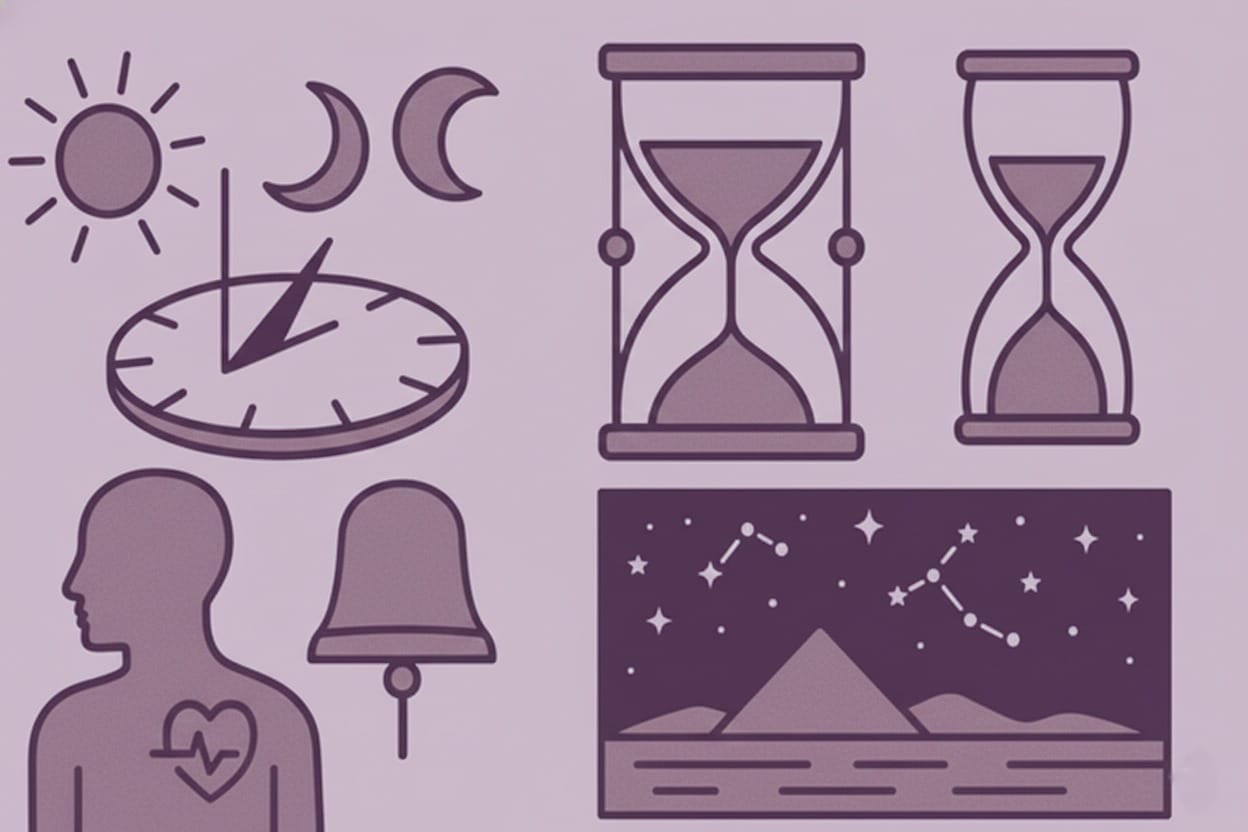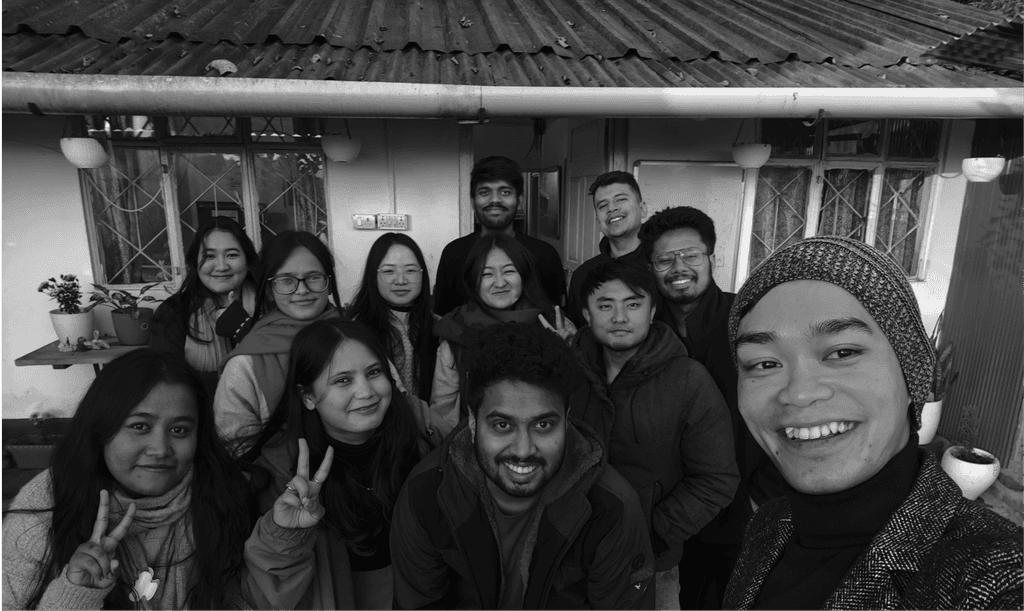Bengali
Timekeeping Before Clocks: Tracing Ancient Indian and Bengali Timekeeping Traditions #Traditional Knowledge

Proteeti Satpati
Aug 15, 2025

Timekeeping Before Clocks: Tracing Ancient Indian andBengali Timekeeping Traditions
#Traditional Knowledge
"Time was once told by tides and twilight, sung by birds, and whispered by the wind—long before clocks dared to measure it."
Much before the mechanical clock became a reality, civilisations relied on indigenous methods to track time. From celestial observations to water clocks, the human need to organize daily life, agriculture, and rituals gave birth to unique timekeeping techniques. This was also true for India, especially Bengal, where people wove their daily lives around indigenous timekeeping methods that married science with ritual and nature with culture.
In this blog, we delve into the depths of how people in Bengal and the broader Indian subcontinent crafted their way of knowing the hour—from astronomical calculations to water clocks, and temple bells to birdcalls—and how traditional methods have still found a way to retain their presence in cultural practices and continue to persevere even in the face of the ruthless pace of mechanization that characterizes the world of today.
Celestial Science: Astronomy and the Panchang
Astronomy played a key role in Indian, and Bengali, timekeeping traditions. The movements of celestial bodies were meticulously observed and charted to divide the days and years into meaningful units. Bengal, with its rich tradition of astronomy and mathematics, had a significant role to play in enriching these early efforts. The Panchang, which was the traditional Hindu calendar, used the lunar cycle to divide the year into months named after prominent constellations. This calendar was a prime example of how important the role of Nakshatras and celestial bodies was in determining rituals, agriculture, and governance.
Panchang was used for centuries by Bengali scholars and priests to determine auspicious days for festival dates and agricultural cycles. Bengali astronomy experts like Raghunath Purushottama refined these calculations to create more accurate almanacs to guide everyday activities. This led to the introduction of concepts such as Tithis (lunar days) and Muhurats (auspicious time periods) which were widely used for religious and social events. Bangabda: Akbar’s Fusion Calendar Another landmark moment in the history of pre-clock timekeeping in Bengal was the introduction of the Bengali calendar, Bangabda, which was introduced by Akbar in 1584. This was a unique fusion of Islamic lunar and Hindu solar tenets of timekeeping.
This helped standardize timekeeping in Bengal, particularly in the case of agriculture, aligning tax collection periods with region’s seasonal cycles. Ghati Yantra: Measuring Time with Water people also developed the Ghati system of timekeeping. These were water clocks known as Ghati Yantras that would measure the passage of time through the controlled flow of water from one vessel to another, through units called Ghatikas. This method was widely used in the Dakshineshwar and Kalighat temples to signal daily prayer and offering times. They were also widely used to regulate trade and administrative work in the medieval cities of Murshidabad and Gauda.
Nature as a Clock: Ecological Cues and Cultural Rhythms
During this period in the history of Bengal, we also observe a unique dependence on biological and environmental cues to measure time. The call of the cuckoo signaled dawn. The ebb and flow of tides guided the fishermen of Sundarbans in timing their ventures. He boatmen’s Bhatiyali songs often had references to time and its unique nature of waiting for none. Even the auspicious Brahma Muhurta—the religiously important pre-dawn hour—was determined based on celestial movements and the spiritual and symbolic silence in the natural world. In short, Bengal’s maritime culture environmental dependence ensured that natural elements, especially rivers such as the Ganges, the Hooghly, and the Brahmaputra played crucial role in guiding trade, travel, and daily life.
Bells and Criers: Sound as a Signal of Time
The account of timekeeping Bengal perhaps is not complete without the mention of an age-old device of signaling time—bells. Mangal Arati, and midday offerings at temples, big and small, were signaled using bells. In trade towns like Kolkata and Chandannagar, bells rang to indicate market opening and closing hours. Public criers often used bells to announce significant events, marking time for communal activities.
The Colonial Shift: From Cycles to Clocks
With the British, came the European clocks, almost ominously calling time on all the means and measures of timekeeping that had been prevailing in the land. Water clocks. gave way to Big Ben-style clock towers and wristwatches replaced sundials. As times changed, indigenous methods slowly gave way to the more machine-driven products, and modern inventions steadily overtook traditional knowledge.
Echoes in the Present: The Persistence of Traditional Time
However, all has not been lost. Traditional lunar calendars are still considered an indispensable part of Bengali households with them being of utmost importance when it comes to determining auspicious days for sacred rituals and festivals. This goes on to show ancient timekeeping practices have themselves stood the test of time. In an increasingly mechanizing world, these methods have somehow still held on to their relevance. They are reminders of the deep connection between human societies andnature, the ingenuity of ancient science, and the cultural rhythms that continue to shape our lives.
Timekeeping is not just a scientific pursuit; it is a practice deeply woven into the Bengali social structure that has endured quietly in a race defined by the beat of quartz and atomic seconds. It survives in the ringing of the temple bells, the rhythms of the tides, and the occasional rustling of the Bengali calendars in every Bengali drawing room; and it is through preservation of these practices and knowledge systems that we honour rhythm over rush, and community over clockwork.

